Captain Malcolm A. Smith
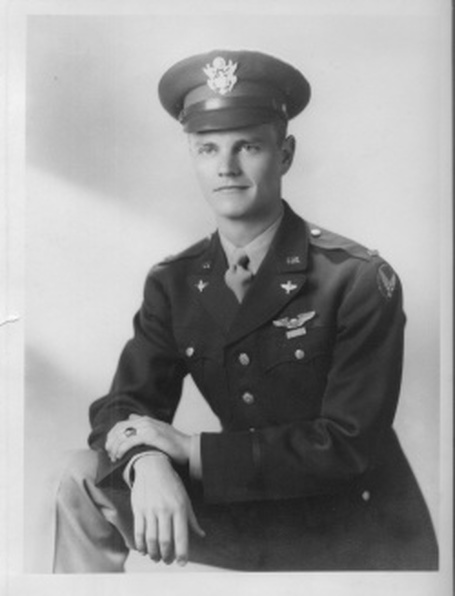
- Unit: 368th Fighter Group, 395th Fighter Squadron
- Service Number: O-025580
- Date of Birth: December 7, 1917
- Entered the Military: January 19, 1943
- Date of Death: May 21, 1944
- Hometown: Birmingham, Alabama
- Place of Death: over Vibraye, France
- Award(s): Air Medal with 4 Oak Leaf Clusters, Purple Heart
- Cemetery: Plot C, Row 10, Grave 46. Normandy American Cemetery, Colleville-sur-Mer, France
Mentored by Mrs. Erin Coggins
Sparkman High School
2014-2015
Early Life
Malcolm A. Smith was born on December 7, 1917, in Jefferson County, Alabama, to a respectable banker father, Malcolm Smith, and a gracious southern mother, Vera Smith. He also had a younger sister named Marianne.
Growing up, Smith was fascinated with rabbits, raising several throughout his youth with a childhood friend. In a childhood diary, Mac records his bunnies’ story, along with the impact of the great depression on his day-to-day life. Smith was raised in Birmingham, Alabama, where he attended Ramsay High School. Mac maintained a high-grade standard in school, participated in baseball and track, and became his class’s vice president.
After graduating high school in 1935, he became a third-generation Auburn University attendee and was initiated with his grandfather’s badge, which predated the Civil War. While at Auburn, Mac also enrolled in the Reserve Officers Training Corps (ROTC) Field Artillery Unit of Auburn, eventually attaining the rank of first sergeant.
At age 22, Smith can be found in the 1940 census. He is listed living in New York, attending the U.S. Military Academy at West Point. At West Point, Mac met the beautiful Mary Ann Graham of Baltimore, Maryland. They were married two days after Mac’s graduation, on October 30, 1942.
On February 29, 1944, Mac’s first and only child, Susan Ann Smith, was born. Malcolm Smith graduated in the upper third of his class in the early 1940s.
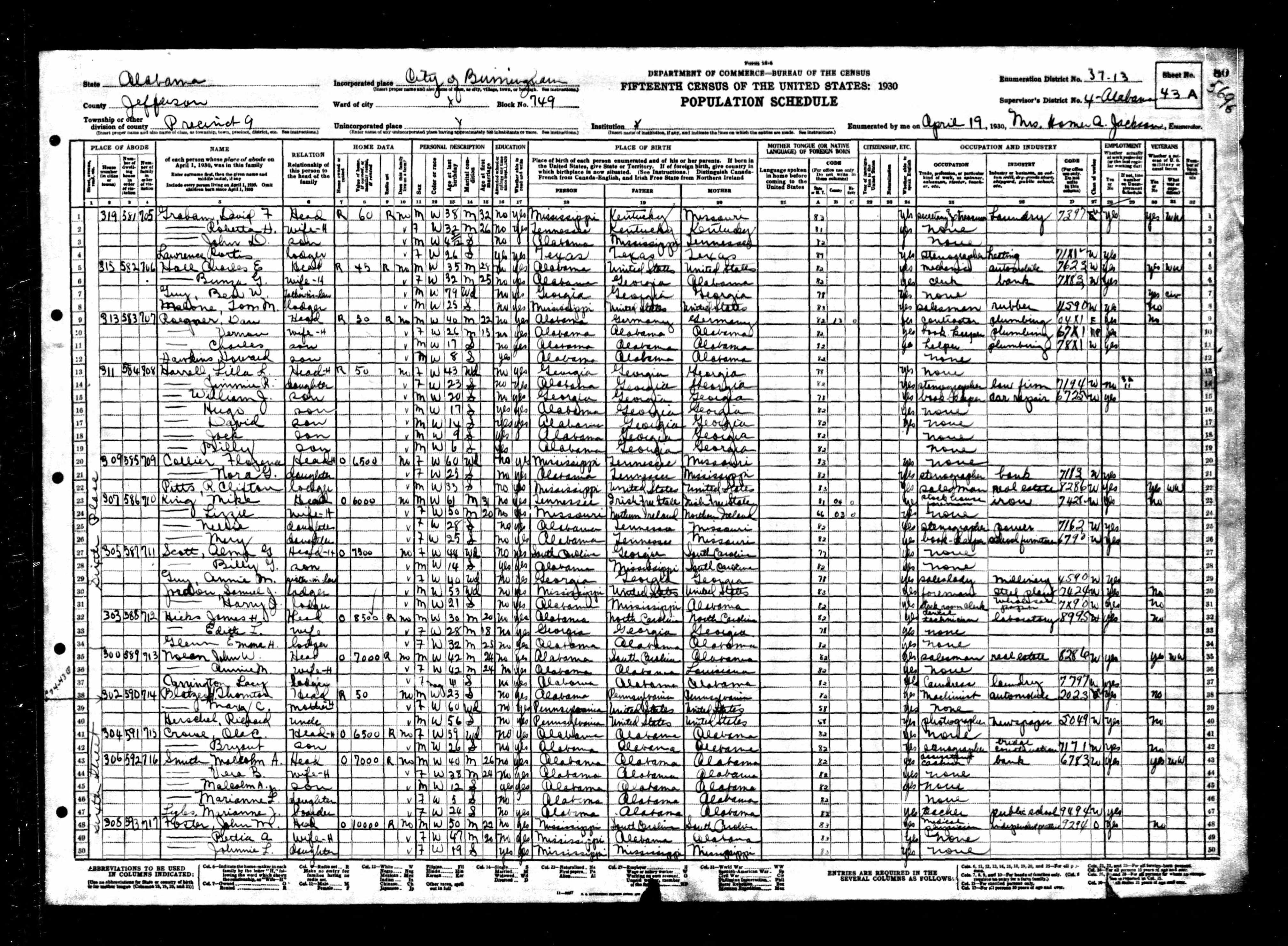

Homefront
Life in the Heart of Dixie
During the war, the country’s first civilian-run servicemen’s club (USO club) opened its doors in Montgomery, Alabama. Many people volunteered for Red Cross projects to make bandages, conduct blood drives, and operate travelers’ aid booths at railroad stations and bus stations to help service members and war workers. Few states could match the record of Alabama in purchasing war bonds to finance the war. Women’s clubs, schools, and Boy Scout troops sponsored scrap drives to collect aluminum pots and pans, and old rubber tires, all of which were recycled for the war effort.
For the majority of the war, most Alabamians felt the war was something going on “over there.” But in the summer of 1943, the war came to Alabama, when thousands of primarily German prisoners of war arrived in the state. It was here many Alabamians saw the enemy face-to-face for the first time—chopping cotton, harvesting peanuts, or felling trees.
The racial politics Alabama became infamous for in the 1960s and 1970s were born in World War II, with the civil rights movement’s growth. Many African Americans regarded World War II as a struggle against racism abroad and at home. Having proved their patriotism in the fight against aggression and totalitarianism, African Americans—especially the veterans—were never again going to submit willingly to racism and a segregated society at home.
One in ten Alabamians—more than 300,000—saw military service in World War II.
Life in a Steel Town
Steel mills in the Birmingham area received millions of dollars in contracts for defense-related products such as bombs, helmets, and steel for shipbuilding. Alabama also played a critically important role in the production of aluminum, which was the ideal material for military aircraft because it is both strong and light. Alcoa Aluminum had a plant at Mobile, and Reynolds Metals had a facility in the Tennessee Valley. Alabama’s textile mills spun and wove furiously to produce fabric for uniforms, and its timber industry boomed as a result of wartime demand for construction and paper products.
The Bechtel-McCone plant at the Birmingham airport was another central aircraft modification facility.
The Great Depression
The stock market crash of 1929 exacerbated an already existing decline in agriculture that had begun much earlier in the decade and spread statewide to cities and industries after that. The Depression’s impact on Alabama lasted throughout the 1930s and into the early 1940s, which was longer than the nation.
Unemployment in Alabama peaked at 25 percent in 1933 and hovered around that mark throughout much of the 1930s. Alabama’s already limited non-farm employment fell 15 percent between 1930 and 1940. Without income, people could no longer buy the goods that buoyed the American economy. In Alabama, for example, personal annual income fell from an already low $311 in 1929 to $194 in 1935.
The soldiers enlisted in the American army grew up in a world of poverty. The Depression not only shaped a nation but shaped the youth the U.S. produced.


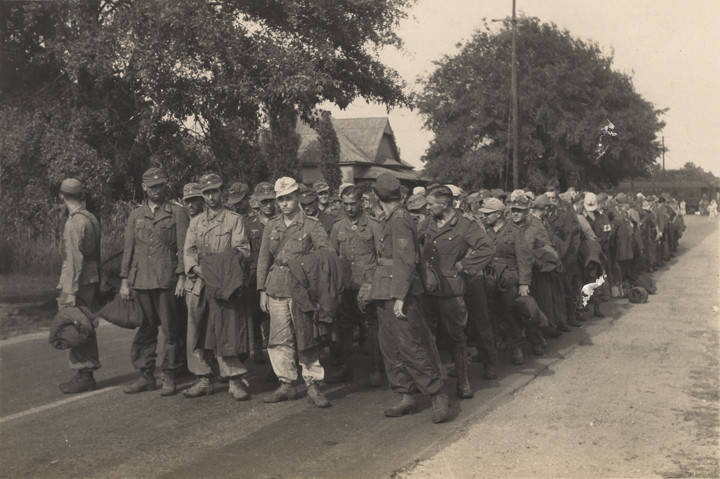
Military Experience
On December 7, 1941, Mac was quoted to have said that “he wanted to be a part.” When allowed to enter flight training, Smith immediately volunteered. In June 1942, Smith began flying school in Tulsa, Oklahoma, earning his wings in December 1942.
In January 1943, Smith graduated from the United States Military Academy as a second lieutenant in the U.S. Army Air Corps. In August 1943, he was assigned to the 368th Tactical Fighter Group, 395th Fighter Squadron. They were known as “Panzer Dusters.”
On December 17, 1943, Smith was promoted to captain less than a year after graduation. Ten days later, the 395th Fighter Squadron sailed for England. The unit began flying combat missions in March 1944. Smith flew his P-47 in combat missions. It was named Mary Ann, his wife. Smith flew many dangerous combat missions and was awarded five Air Medals for his service.
Captain Malcolm A. Smith of the U.S. Army Air Corps was felled on May 21, 1944, just outside of the small town of Vibraye, France.
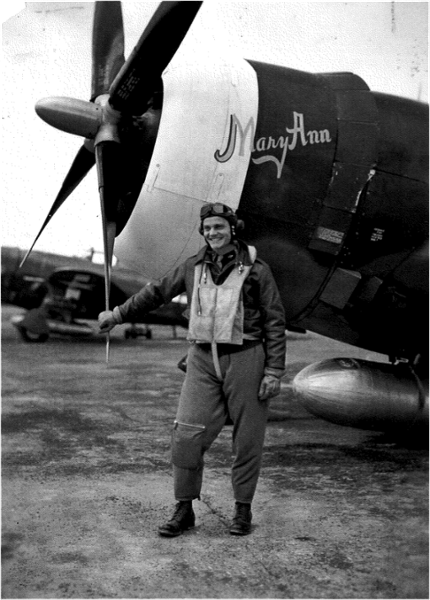

Eulogy
“To-day I had my first airplane ride. Johnnie and I sat in the front seat of a red airplane. It was thrilling and also very expensive…”
Malcolm Alexander Smith, childhood journal, the early 1930s
We often see names as mere words on paper. We blur together the inky scripts until their meanings become lost and obscure, containing unimportant and distant events.
Captain Malcolm A. Smith, referred to as Sonny or just Mac by family and Smitty by his men, was more than just a name on a paper, more than an inky blot, more than a distant event.
While he enjoyed his time at Auburn University, Smith’s ambition led him to West Point. Eventually, he spoke to U.S. Senator John H. Bank and earned a commission to West Point, enrolling on July 1, 1939.
“A congenial gentleman from the South with a warm smile, Mac was well-liked at school, although there were many times he felt he could not pass, as he struggled to grasp the concept of Algebra.” Smith graduated in the upper third of his class in the early 40s.
While at West Point, Mac met the beautiful Mary Ann Graham of Baltimore, Maryland. They were married days after Mac’s graduation. On February 29, 1944, Smith’s daughter, Susan Ann, was born. She never met her father.
Smith was felled on May 21, 1944, just outside of the small town of Vibraye, France. He was a man who gave up everything for those he loved. In his courageous last moments, one cannot know what his thoughts were, but I believe that they must have been of his wife and young daughter he left behind, the fate of the country he so bravely served, and of the brothers he would no longer be able to protect.
Caught in air-to-air conflict with the enemy—starring into the cold gaze of death himself— he did not hesitate to lay down his life for the men, women, and children of the tiny, nondescript town of strangers below. He courageously and deliberately directed his failing aircraft away from the city and into the assured death of the Vibraye forest below.
The people of Vibraye watched as Mac was hit and his aircraft fell “like a comet” towards the deadly forest below. After a few days, these people went to retrieve his remains. They knew there would be no survivor. Upon finding his aircraft and body, both badly burned, the citizens of Vibraye honored him as a symbol of hope for their future and that of France itself. Unsure of his nationality, the people of Vibraye played the Canadian, British and American national anthems as they buried him in their town cemetery. Years later, upon discovering his identity, these people dedicated a street, “Rue de Malcolm Smith.” They always have and will never forget the name of the soldier who gave them hope.
While Mac and I have never met, I feel that this experience has allowed me to know a face beyond the statistic. A project that began as a way for me to share and teach his story has now instead been a teacher to me. Remember those blurry words? Now, thanks to Mac—they’ve focused.
They are no longer mere names on stones or files locked away in archives. They are no longer a list of numbers or lists of soldiers– they are lost young boys, Southern charmers, West Point grads, loving husbands, hopeful fathers, determined soldiers, happy-go-lucky friends.
Mac, you inspired hope in your men, your country, a small, desperate town, and a young girl who will remain ever grateful to you and your countless comrades who fought for their country and what they believed in.
For these realizations and for so much more, I thank you, Captain Smith.
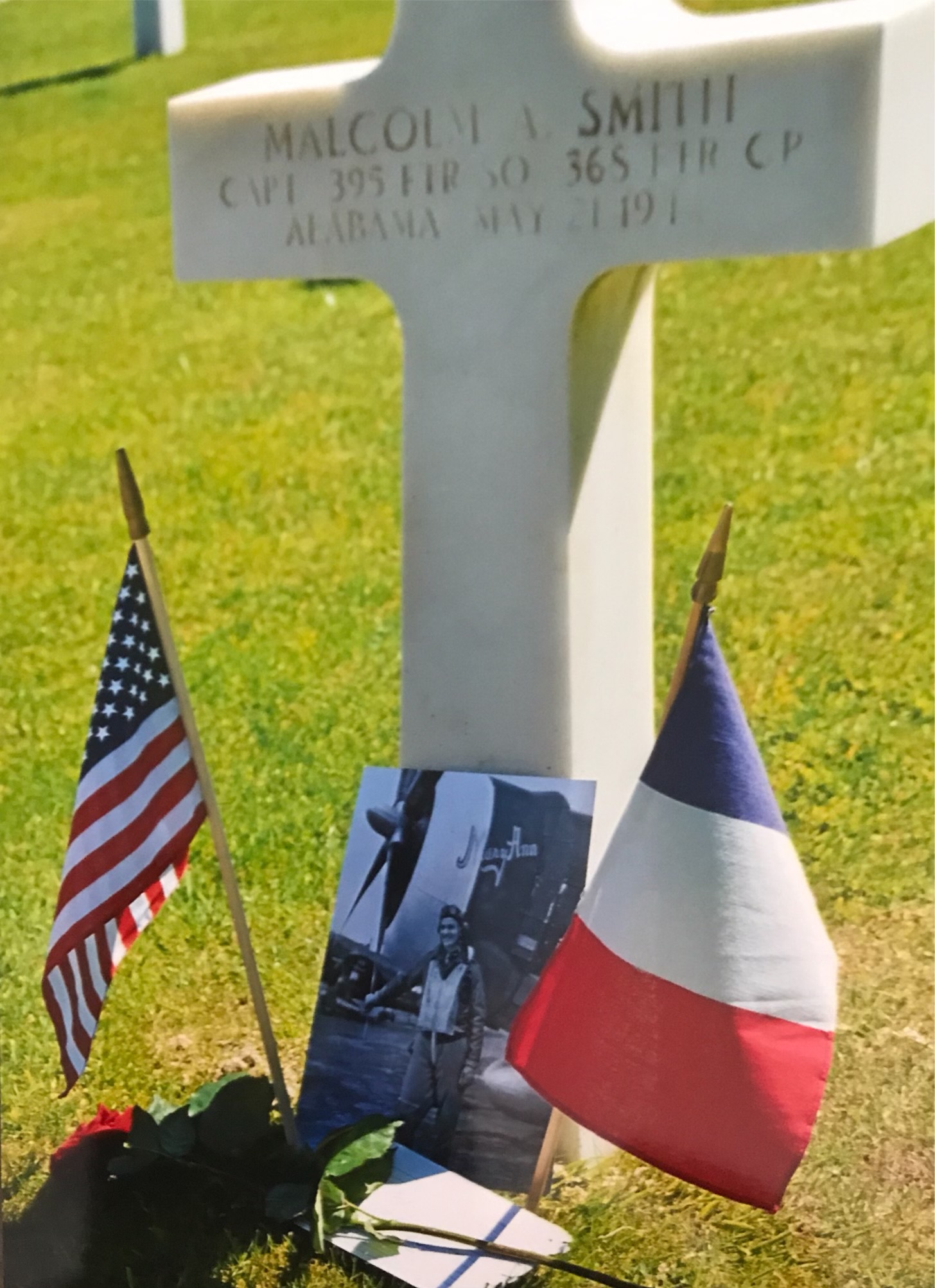
Reflection
“How do you feel?”
“Like it doesn’t deserve to be this pretty.”
That was the moment. The “aha” feeling that washed over me as I stood on Utah Beach and looked over its calm, glass-like surface was unexpectedly sobering.
I remember one of the staff, Mr. Hipkins, asking me how I felt, and I can still recall the bitter taste in my mouth as the icy waves I stood in dared to be beautiful.
When I first found out about the Normandy program, I, admittedly, was not enamored. They’re going to send us to France to do what? The whole idea seemed ludicrous. We were going to deliver eulogies for men we’d never met, men who had been dead for 70 years? But my teacher, Mrs. Coggins, promised an unforgettable experience and, at the least, a free trip to Europe. So I leaped and wrote an essay.
Even when notified we were accepted, I still didn’t get it. I was, of course, a lover of history, but I was not exactly sure of the point. Of course, to honor our dead, but there was something else that I had yet to put my finger on.
The moment I first started to understand genuinely, I was sitting at Captain Smith’s niece’s dining room table, reading the loosely bound pages of his childhood diary and the lightly browned pages of letters addressed to his young wife and newborn child.
For hours, I was lost in the words there, his words, and when it was time to leave, I felt as if I were leaving a newfound friend behind. This was the first time I stopped calling him Capt. Smith in my head and began to know him as just “Mac instinctively.”
In D.C. I met the other students and found that they had similar stories to share. We referred to them as “our soldiers” and brought them up in conversation casually, as you would a brother or cousin. They had become a part of us, people who we spoke of with life. Before, they may have been 70 years dead, but now we spoke of them with life and presence.
Throughout our visit to D.C., the gravity of what we were doing began to soak in slowly. Nice dinners with veterans, lectures from experts, ceremonies at memorials— all pieces of the puzzle.
And then we were in France, staring down from German bunkers, imagining the screams of artillery and men alike on the serene beaches below. Standing at the edge of cliffs, gazing into craters left behind by deadly bombs. We were wandering through graveyards of both friend and foe, seeing such lines blur.
Following the footsteps of these men— men we’ve come to know— the feeling that shrouded our final day, the one in which we would visit the American Normandy Cemetery, became one of anticipation. I felt that I was going to meet Mac. He was there, wasn’t he?
It’s a difficult thing to describe— the moment we all stood together at the cemetery, in the shadow of the statue of American youth, listening to Taps. Even more challenging to explain is when I placed my hands on the grave of my Silent Hero and felt as if our times, his and mine, were not so far apart. In these moments, with flags and rose in hand, I truly got it. This was where he died. This was where he gave everything, where they gave everything.
We put faces, stories to these names. And that made it clear.
Sacrifice is not a distant, “over there” thing. Sacrifice is a part of us as it shapes histories and molds futures. These men and women who give their lives, they gave everything– just for a belief. A genuine passion for freedom and democracy and that “all men are created equal.” They gave their lives so that you and your children and your children’s children have the luxury to believe the same.
Bibliography
Primary Sources
Alabama. Jefferson County. 1930 U.S. Federal Census. Digital images. ancestry.com.
Mack, June. Interview and personal artifacts. May 15, 2015.
Malcolm A. Smith (1944). Select Military Registers, 1862-1985. Digital images. ancestry.com.
Malcolm A. Smith (1945). Select Military Registers, 1862-1985. Digital images. ancestry.com.
New York. Orange County. 1940 U.S. Federal Census. Digital images. ancestry.com.
Smith, Marianne. Interview with author. May 15, 2015.
Secondary Sources
“Capt Malcolm A. Smith.” Find a Grave. Updated August 8, 2010. Accessed March 26, 2021. www.findagrave.com/memorial/56650148/malcolm-a-smith.
Cronenberg, Allen T. “World War II and Alabama. Encyclopedia of Alabama. Updated December 12, 2014. Accessed March 26, 2021. encyclopediaofalabama.org/article/h-1348.
Downs, Matthew L. “Great Depression in Alabama. Encyclopedia of Alabama. Updated October 1, 2019. Accessed March 26, 2021. www.encyclopediaofalabama.org/article/h-3608.
“Malcolm A. Smith.” American Battle Monuments Commission. Accessed March 26, 2021. www.abmc.gov/decedent-search/smith%3Dmalcolm-2.
Stender, Erin. “Mac and Me.” Air & Space Magazine, June 2017. www.airspacemag.com/as-next/mac-and-me-180963210/.
Windsor, Matt. “War and Remembrance.” UAB Magazine, November 2012. www.uab.edu/uabmagazine/2012/november/war-and-remembrance.

